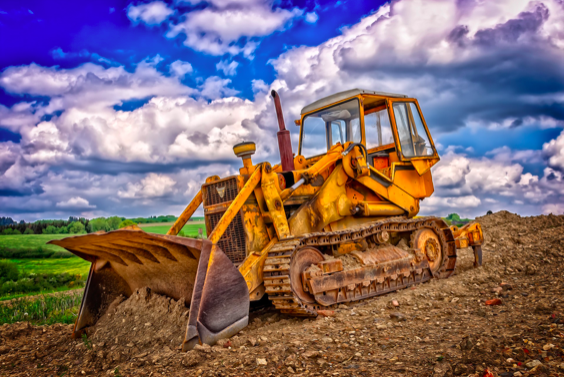Excavation is the process of removing soil to prepare an area for construction. It is an essential part of constructing roadways, bridges, homes, and other structures. But unbeknownst to many, the specific purpose of excavation classifies each type of excavation.
Meanwhile, on a confined space or small area of construction, excavation may be carried out by using manual tools such as shovels, wheelbarrows, and picks. Large site excavation works will require heavy-duty equipment such as backhoes and bulldozers.
Excavation can also be classified according to the purpose of the work. As such, here are the types of excavation in construction.
Cut and Fill or Stripping Excavation
When planning the construction and design of a building, engineers and architects must first consider the existing conditions of the site. If the site is not uniformly elevated, then cut and fill process comes.
Without using any computer software to determine the volume of soil to be removed or added, simple calculations will estimate the cut and fill the volume of the site. The site is divided into sections.
It could also be used to form a level surface, as lower sections of the site are ‘fill’ and elevated sections of the site are ‘cut’.
Basement Excavation
Basement is part of a building below the ground floor of the building or structure. Basement excavation can be difficult, depending on the size of the property. The work for constructing a basement will lastly for 12-20 weeks. An caterpillar 330d excavator or backhoe can dig down with excavated material.
There are three types of basement construction:
- Block, masonry walls
- Precast panels
- Poured concrete
Bridge Excavation
Bridge Excavation involves the removal of any barriers to the structure of the bridge’s substructures and foundations. The work may be subdivided into dry, wet and rock excavation. These need to be well-formed to support the bridge above.
Trench or Footing Excavation
Trench excavation is used when the length of the excavated area of the site which the depth exceeds than the width. Trench excavation is also used to assist foundations, bury pipeline or service lines. There are lots of excavating teams such as in Scranton PA and other places that are expert when it comes trench excavation. It has techniques that are used to include:
- Full depth, full length: applicable for narrow trenches, such as sewers and pipelines.
- Stage depth, successive stages: convenient in underpinning, deep foundations, and confined areas.
- Full depth, successive stage: suited for reducing the chance of building collapse and deep trenches.
Roadway Excavation
Roadway excavation involves cut-and-fill or stripping topsoil. Excavation for roadways can have different purposes. And, materials might also be used to help build road components such as to create banks. The construction of roads can describe three methods:
- Earthworks
- Setting out
- Paving Construction
Over Excavation
The term over excavation attributes to an excavation where it goes beyond the depth for the formation of a below-ground structure. Because of the presence of irrelevant material that should be removed.
Over-excavation might be necessary if the condition of the ground don’t have a load-bearing capacity or sufficient stability to support the structure. Then, excavation should be taken to a deeper and more stable level to remove the unsuitable material. At the lower level, the ground must need to check the conditions to ensure a suitable load-bearing capacity.
Dredging
Dredging is the process of removing or excavating debris and sediments below water level, typically from the bottom of rivers, harbors, and lakes. But, why dredging is necessary as such? Here are the reasons.
- To excavate trenches for laying cables and pipelines.
- To increase the depth to allow ships and boats pass through
- To prevent the contamination of sediments in other areas of water bodies.
Takeaway
Excavation is not only about digging or making holes. It has purpose and classifications. Excavation will help to stabilize or firm the foundation of the buildings or other structures to prevent casualties caused by an earthquake or floods.
greenshields Everett – Looking for an industrial supply store near me? We have products and supplies that can help get any job done.



